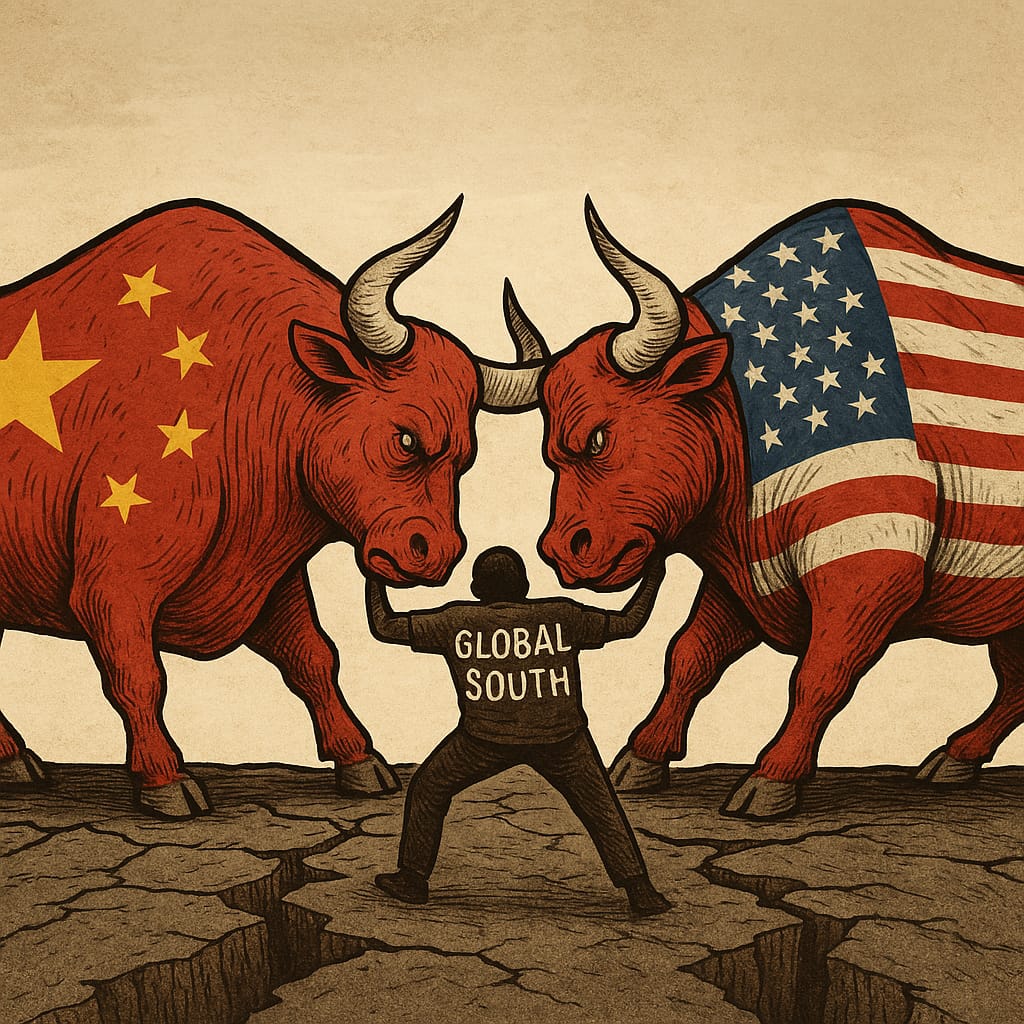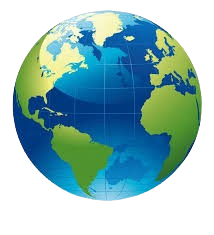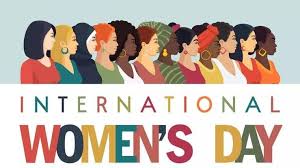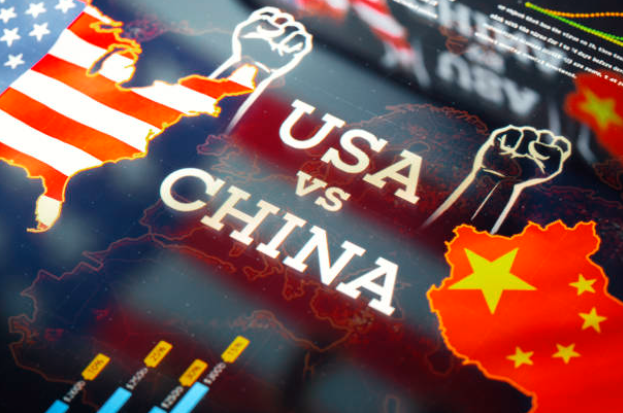
“When elephants fight, it is the grass that suffers.”— African Proverb
This timeless African saying perfectly captures the turbulent essence of the US-China trade war, a contest between global titans whose tremors rattle the very foundations of the developing world. It began with steel tariffs in 2018—and ended up redrawing the map of global trade. The US-China trade war, ignited under President Donald Trump’s first term, sent shockwaves across the Global South. Its aftershocks still linger. As the two most powerful economies exchange economic fire, it is the nations of the Global South that find themselves absorbing the aftershocks, struggling, adapting, and sometimes, seizing unexpected opportunities.
From derailed supply chains to spiraling debt, from digital battlegrounds to shifting alliances—this is more than a bilateral feud. It is a profound, often perilous, realignment of global power, with the Global South at its epicenter.
1. Trade War Timeline: From Tariffs to Tech Bans
The trade war formally erupted in 2018 when President Donald Trump’s administration levied tariffs on $50 billion worth of Chinese goods. What followed was a tit-for-tat escalation that morphed into a new kind of economic cold war.
Key Milestones:
· Over $550 billion in U.S. tariffs imposed on Chinese goods.
· China’s retaliatory tariffs on $185 billion in American exports.
· Bans on Huawei, TikTok, and critical semiconductor exports.
· Geopolitical tensions escalate over Taiwan, the South China Sea, and tech supremacy.
While the Western media has largely centered on Washington and Beijing, the real battlefield often lies far beyond these capitals—in the economies of the Global South.
2. Shifting Supply Chains: Winners and Overstretched Economies
The Silver Lining:
The fracturing of global supply chains brought a curious opportunity. Nations such as Vietnam, India, Mexico, and Indonesia have emerged as alternative hubs for global manufacturing, thanks to the “China+1” strategy adopted by multinational firms.
Notable Trends:
· Vietnam’s exports to the U.S. grew over 30% between 2018 and 2022.
· Apple, Samsung, and Intel are expanding into India and Malaysia.
· Mexico surpassed China in 2023 as America’s top trading partner.
Yet this sudden boom comes at a cost:
· Limited diversification beyond key industries
· Poor labor laws and unsafe working environments
· Inadequate infrastructure buckling under new demands
The Global South stands at a precipice: will it rise as a resilient pillar of global trade, or fall into a trap of cheap labor and environmental degradation?
3. Commodities, Currencies & the Cost of Chaos
Market Whiplash:
For commodity-exporting nations, the trade war has been a rollercoaster. Prices of oil, copper, and soybeans, the economic lifeblood of countries like Brazil, Nigeria, and Chile have swung wildly, throwing national budgets and livelihoods into chaos.
Currency Fallout:
Inflation spikes and currency devaluation have plagued nations like Pakistan, Argentina, and Ghana.
Food security has become precarious amid rising wheat and fertilizer prices.
Case Study – Ghana:
In 2022, Ghana defaulted on its external debt for the first time since 1983, a collapse fueled by post-COVID inflation and the economic disruptions triggered by the US-China trade skirmishes.
Source: UNCTAD, IMF
4. Technology War & the Digital Dilemma
Stuck Between Silicon Giants:
Africa and Southeast Asia heavily reliant on Chinese tech are caught in a tightening vice. Huawei builds their 5G networks; Chinese firms install surveillance infrastructure. But now, after the US-China Trade War U.S. sanctions have thrown a geopolitical wrench into the equation.
Result:
· Countries face the impossible choice between affordable tech and geopolitical alignment.
· Sovereignty in the digital age remains elusive.
“This isn’t just about apps or 5G—it’s about the future architecture of digital economies.”
— Dr. Karen Monaghan, Digital Geopolitics Fellow, CFR
The Global South risks becoming digitally dependent, without the autonomy or security that such infrastructure demands.
5. Rising Debt and Dual Dependency
While the US-China Trade war raged, two quiet tsunamis engulfed the Global South:
· Soaring global interest rates
· Increased Chinese lending through the Belt and Road Initiative (BRI)
· Rising IMF and World Bank loans
This has created a perilous model of dual dependency:
· 40% of low-income countries are now in debt distress
· Sri Lanka’s economic collapse (2022) serves as a dire warning of over-leveraging from both Eastern and Western creditors
Source: World Economic Forum
6. A Geopolitical Realignment: Multipolarity in Motion
Out of crisis emerges recalibration. The Global South is no longer a pawn—it is fast becoming a strategic actor on the global stage.
Signs of Shift:
· BRICS Expansion (2024): Welcoming Egypt, Iran, Argentina, Ethiopia, and Saudi Arabia.
· RCEP & ASEAN: Building regional trade blocs outside the West’s influence.
· Calls grow louder for de-dollarized trade systems and new financial architectures.
The Global South is asserting itself not just as a battlefield—but as a bold player reshaping the game.
7. Climate & Sustainability: The Silent Victim
In the race to industrialize and compete, climate pledges have faded into the rear-view mirror:
· Escalating deforestation in Latin America
· Fossil fuel expansion in Sub-Saharan Africa
· Soaring industrial pollution in South and Southeast Asia
Irony reigns supreme: those least responsible for climate change suffer its worst effects. Trade wars only deepen this inequality, diverting attention and funds away from sustainability goals.
Conclusion: A Future Forged in Complexity
The US-China trade war is more than a contest between superpowers—it is the defining economic saga of our time. For the Global South, it brings a potent mix of risk, renewal, and responsibility.
To not just survive but thrive, developing nations must:
· Invest in resilient infrastructure
· Diversify trade partners and supply chains
· Build digital sovereignty
· Reject one-sided debt models
· Forge regional alliances and collective bargaining power
In an age where power is diffused and alliances redefined, the greatest asset is strategic clarity and the boldness to chart one’s own path.
Suggested Reading:
Brookings – US-China Trade War: The Global Fallout
UNCTAD World Investment Report
IMF Outlook on Emerging Economies





